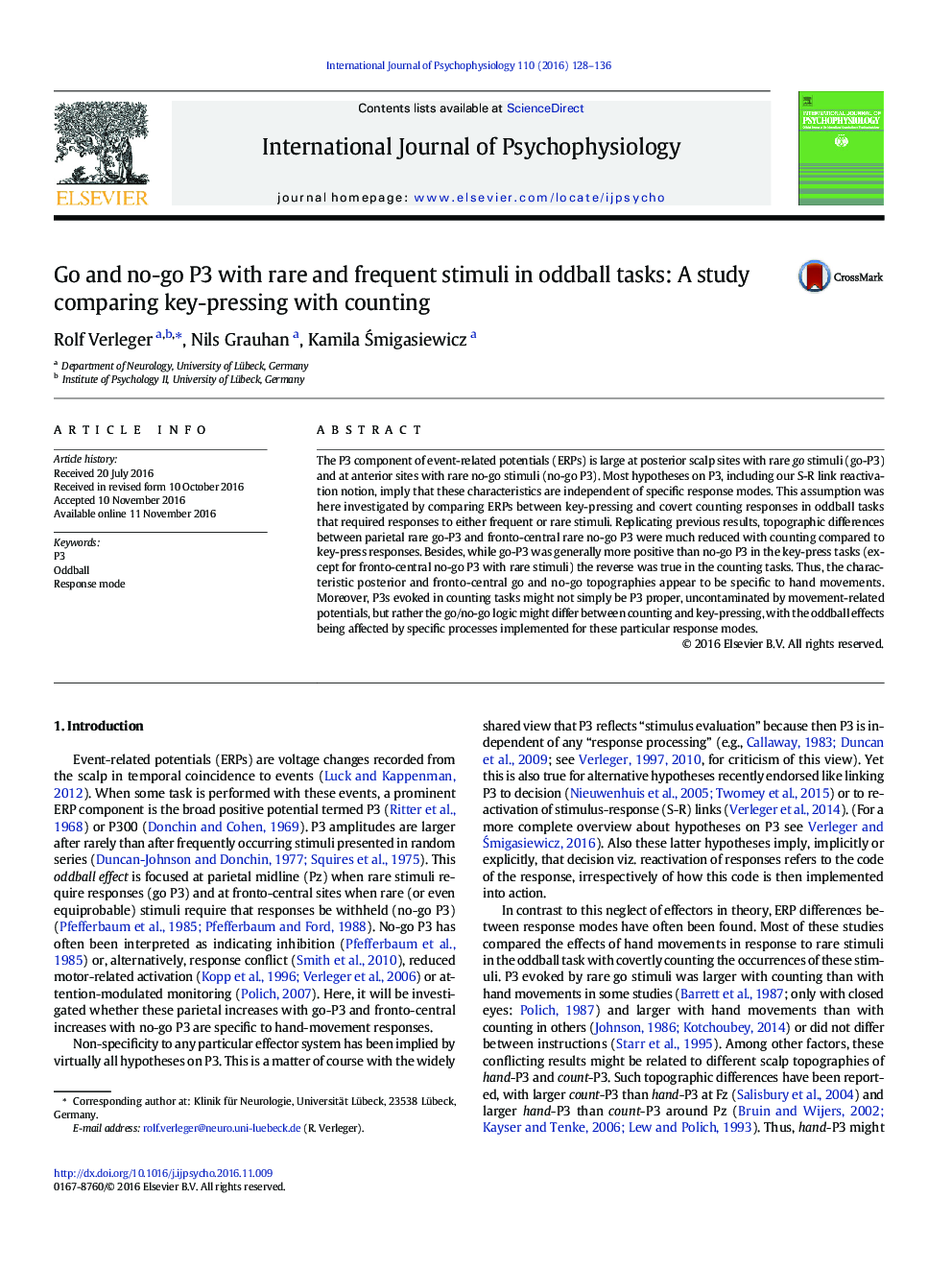| کد مقاله | کد نشریه | سال انتشار | مقاله انگلیسی | نسخه تمام متن |
|---|---|---|---|---|
| 5042391 | 1474386 | 2016 | 9 صفحه PDF | دانلود رایگان |

- Go and no-go P3s were compared between key-pressing and counting
- Differences between parietal go and anterior no-go P3 were much reduced in counting.
- This is probably due to hand-specific fronto-central activation with key-pressing.
- Generally, go-P3 was larger than no-go P3 in key-pressing, but smaller in counting.
- Counting might imply go and no-go operations that differ from key-pressing.
The P3 component of event-related potentials (ERPs) is large at posterior scalp sites with rare go stimuli (go-P3) and at anterior sites with rare no-go stimuli (no-go P3). Most hypotheses on P3, including our S-R link reactivation notion, imply that these characteristics are independent of specific response modes. This assumption was here investigated by comparing ERPs between key-pressing and covert counting responses in oddball tasks that required responses to either frequent or rare stimuli. Replicating previous results, topographic differences between parietal rare go-P3 and fronto-central rare no-go P3 were much reduced with counting compared to key-press responses. Besides, while go-P3 was generally more positive than no-go P3 in the key-press tasks (except for fronto-central no-go P3 with rare stimuli) the reverse was true in the counting tasks. Thus, the characteristic posterior and fronto-central go and no-go topographies appear to be specific to hand movements. Moreover, P3s evoked in counting tasks might not simply be P3 proper, uncontaminated by movement-related potentials, but rather the go/no-go logic might differ between counting and key-pressing, with the oddball effects being affected by specific processes implemented for these particular response modes.
Journal: International Journal of Psychophysiology - Volume 110, December 2016, Pages 128-136